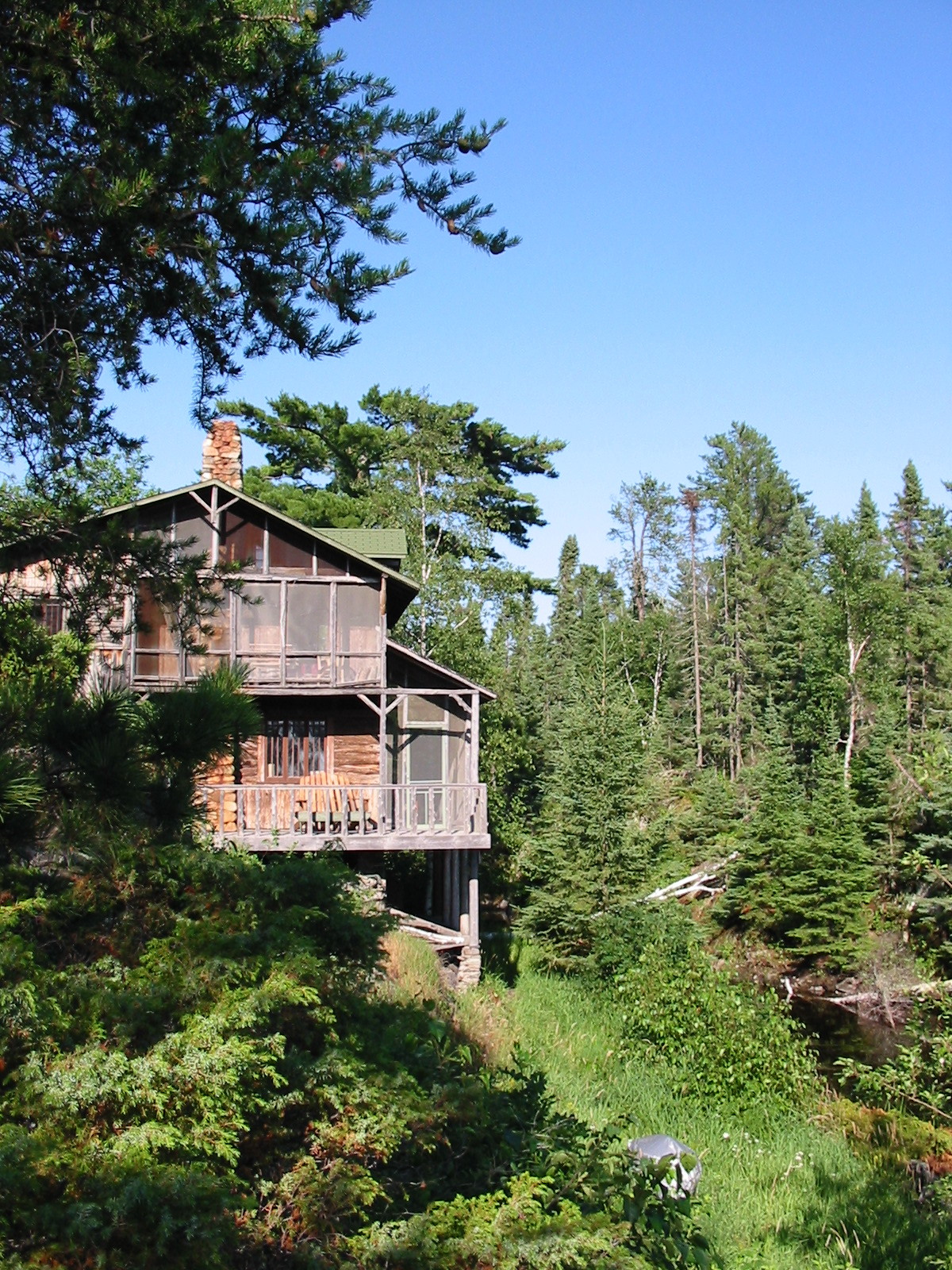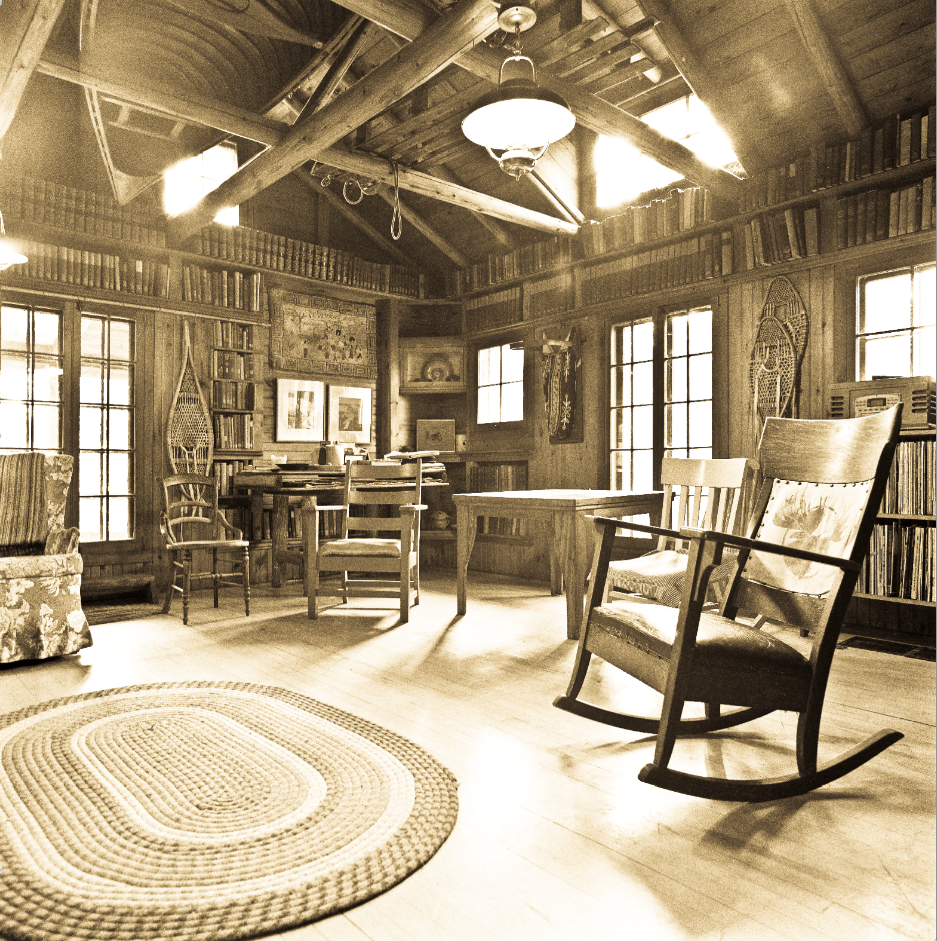Interpreting the Legacy:
A discussion of the Ernest C. Oberholtzer Foundation
Board of Directors in early September 2008
Our Mission: The Ernest Oberholtzer Foundation maintains Ober’s legacy and North Woods island home as a source of inspiration, renewal and connection to Indigenous Peoples, kindred spirits, and the natural world.
Sitting in the Big House on Mallard Island at its meeting on September 6, 2008, the Oberholtzer Foundation Board of Directors wrestled with the current interpretation of Ernest Oberholtzer’s legacy, which we uphold. We agreed that it has many facets, and we spoke highly of all the wonderful people this legacy has brought together. We focused on the islands, the program opportunities offered on Mallard Island, and the history represented there.
The island, as a place and as a small community, is a core idea. We bring people to Mallard Island for the seclusion an island offers, for a weeklong taste of a simpler and possibly more sustainable life, for six long days with fewer distractions, and for the opportunity to become creative there. It’s all a rare opportunity nowadays, and it is not a coincidence that it happens a boat ride away from the mainland and within the wild environs of an island—the island often forces the question. In an island context, we are able to model several aspects of sustainable ecology. Guests come closer to understanding sustainable living, for example, when they carry every gallon of their own water and as they live carefully within the fragile ecosystem on Mallard.
We preserve this place as a place of tranquility, taking great care to “unclutter” the experience, to create openness, and to allow guests to enter into a different relationship with time as they connect with Nature’s rhythms, thereby finding their own natural way. On Mallard Island, folks usually put away their watches and turn off their cell phones. People notice that, on Mallard, they are living within the rhythms of the waves or the trees, flowers, and animals.
Beyond Nature, Mallard also offers its history: its 1930s buildings, and its archives in letter, book, and photograph. We help people drop into an era. We laugh that we spend big money keeping the buildings out-dated. This allows island-goers to step into Ober’s life as it may have been for nearly fifty years, stepping museum-like into his life story. A “storied place” becomes a sacred place, as more and more people are able to share and expand upon the stories many have come to know so well. These are Ober’s stories, but also the story since his time of the re-building of the island and the hundreds of volunteers who have put their hearts into its well being.


Alongside history and stories, a true union of nature and civilization—a culture—is represented on Mallard Island. It is a place rich in color and texture, in music and words—twelve thousand books full of words.
It’s hard to measure exactly how our program has changed lives, in part because we support unstructured outcomes, yet we have witnessed people making heartfelt decisions about their lives, their art, or this earth. Over the past 25 years, some two or three thousand people have experienced and carried home the effects of a Mallard week. Time on Mallard Island is often referred to as a “re-kindling of spirit.” Changes may not be as “rational” as they are relaxed and natural. We hope to give people a taste of the North, and to give back what Ober gave to so many.
Perhaps Oberholtzer’s most important legacy is tied to his decades-long struggle to preserve America’s rapidly vanishing wilderness, including his lobbying efforts that led to the preservation of lands within the Rainy Lake watershed and eventually to the designation of the Boundary Waters Canoe Area Wilderness. His contribution to wilderness preservation is seldom far from our minds, and projects continue to arise from the archives—many thousands of letters and reports—that he left behind and that continue to provide abundant detail in support of our ongoing efforts. It would be hard to overestimate Ober’s preservation work or the richness of friendship and travel that it afforded him.
Most recently, we have ensured the preservation of the four Review Islands that are part of the Oberholtzer legacy by entering into a conservation easement agreement with the Minnesota Land Trust (MLT). The MLT calls this agreement important and symbolic. Many individuals who have never been to Mallard express that they know it’s “out there,” and that they’re glad the four islands are protected in perpetuity—much as urban people are bolstered by simply knowing of the existence of wilderness.
In summary, the Board of Directors named several “pillars” of Ernest Oberholtzer’s legacy: the island itself, music, literature, a focus on native culture, conservation and preservation of wildness, visual arts and photography, storytelling and education using story. It is also our hope and intention, each year, to introduce more young people to all aspects of this legacy in order to support its continuation into the future.
Participants in this discussion:
Jim Davis, Jim Fitzpatrick, Tim Heinle, Bob Hilke, Robin Monahan, Joe Paddock, Michael Reid, Jean Replinger, John Roth, Harry Sweatt, Diane Tessari, Elaine Thrune, and Beth Waterhouse. Board member Mary Swalla Holmes was then on leave.
